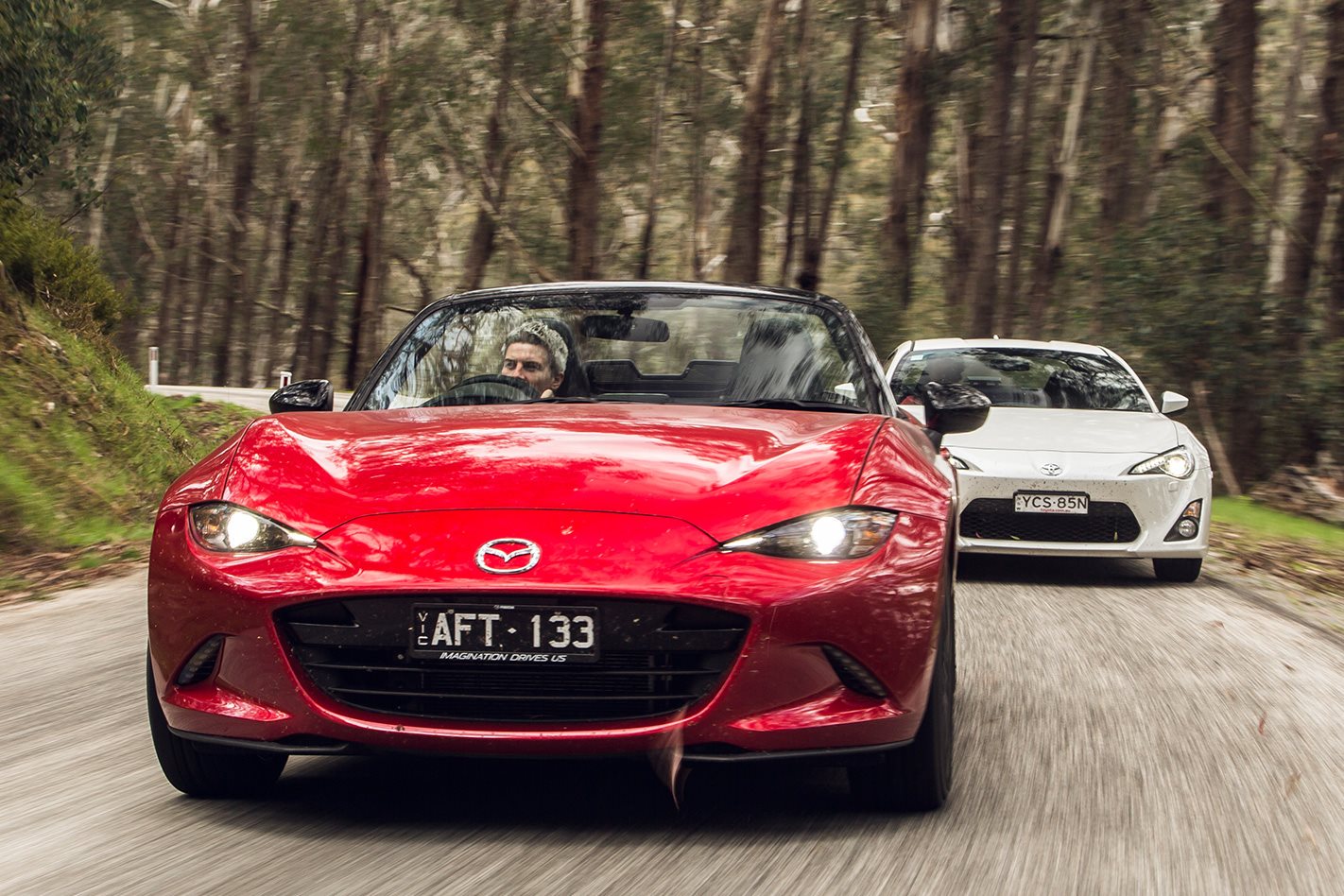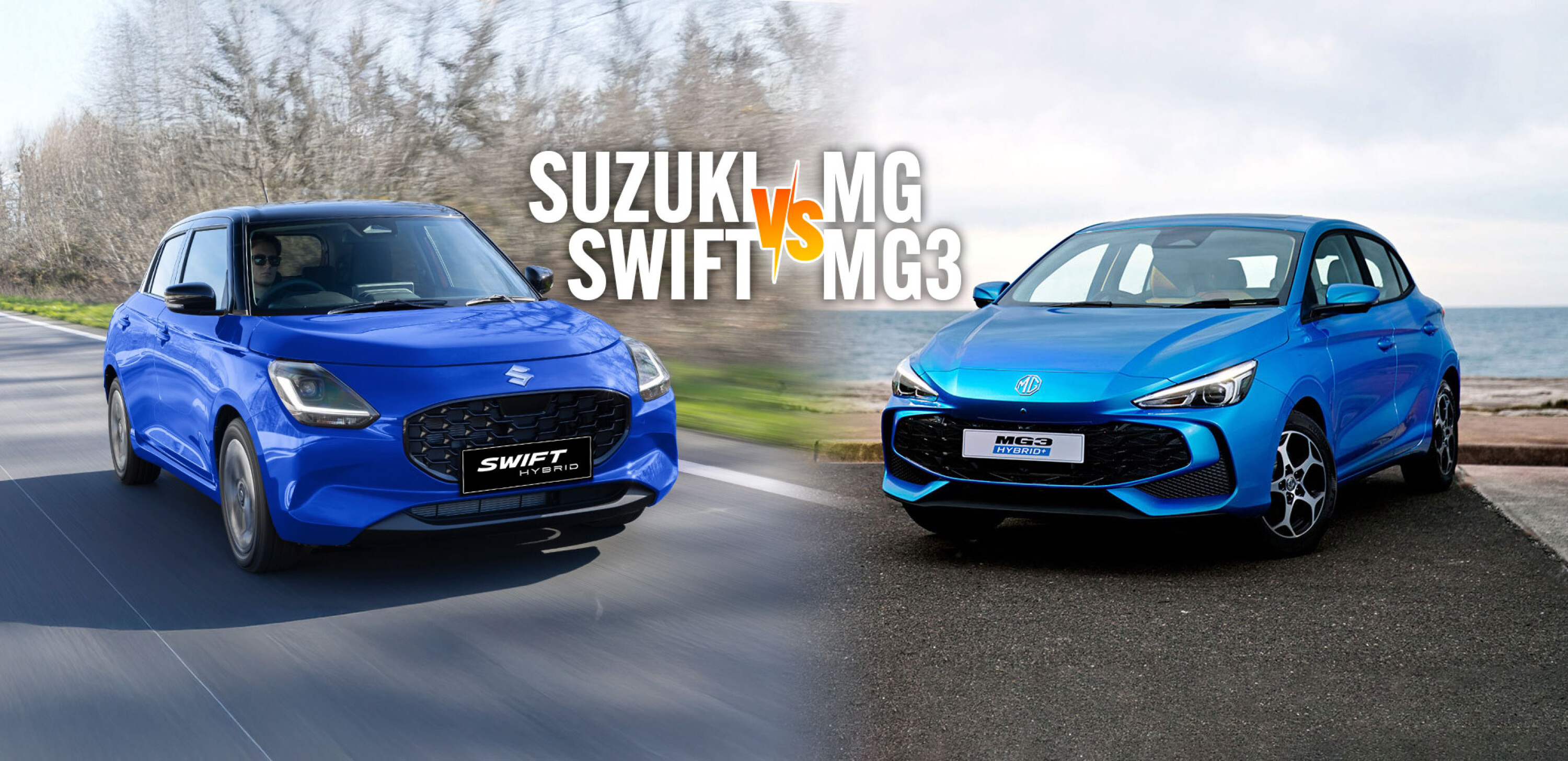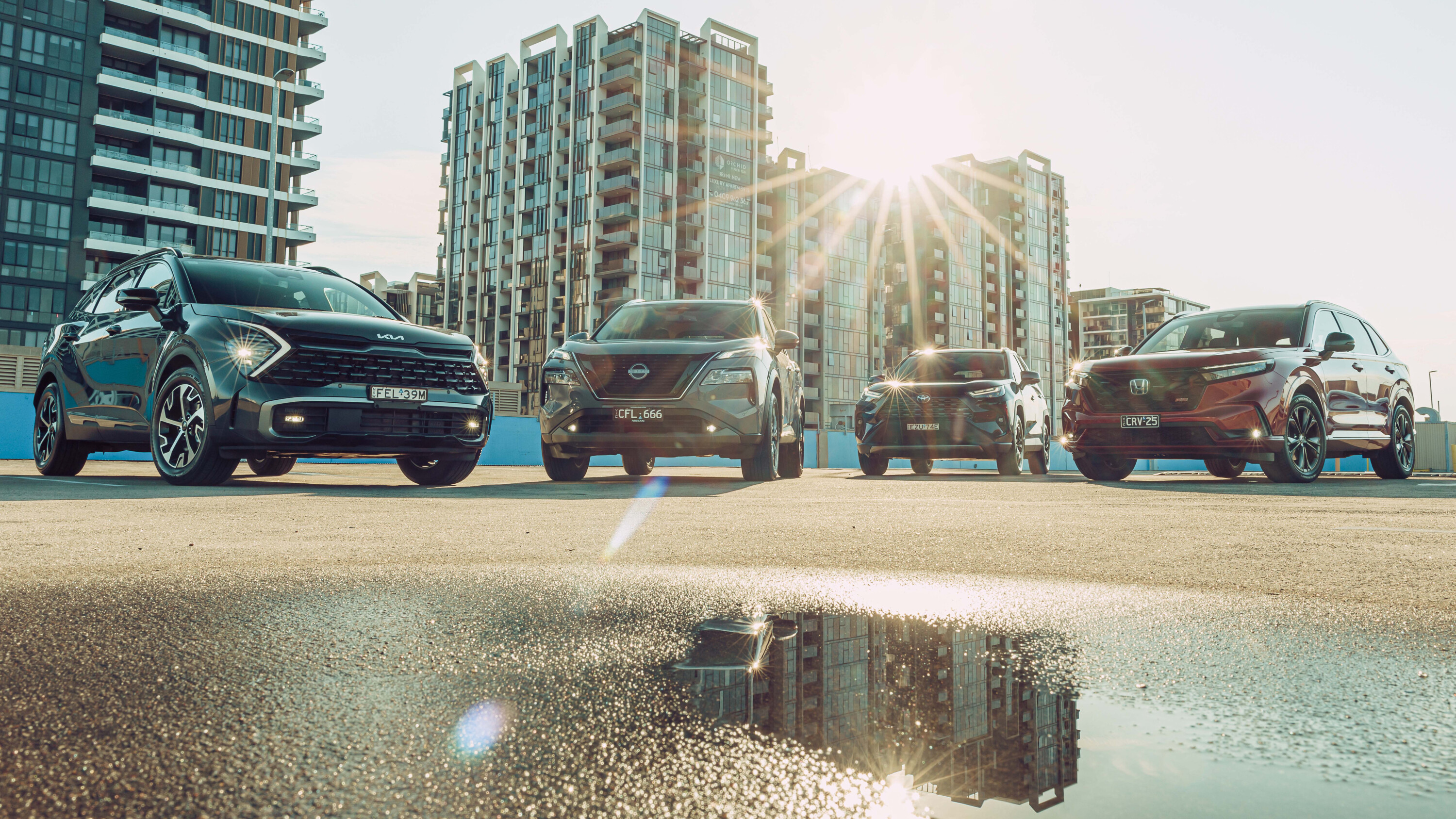Our Car of the Year, the MX-5, is great fun to drive. But can it match the much-praised 86 coupe – COTY in 2012 – for speed and precision?
IT’S Jinba ittai versus Hachi roku: Mazda’s ‘rider and horse as one’ philosophy, which guides development of its MX-5 roadster, against the Japanese translation of ‘86’, which carries on in spirit from Toyota’s fondly remembered, drift-friendly, AE86 Corolla GT.
They may differ in their approach to how a roof is fixed, but this is otherwise no oriental odd-couple. The MX-5 and 86 are united in the way they free up lightweight, rear-wheel-drive performance for those on a budget.
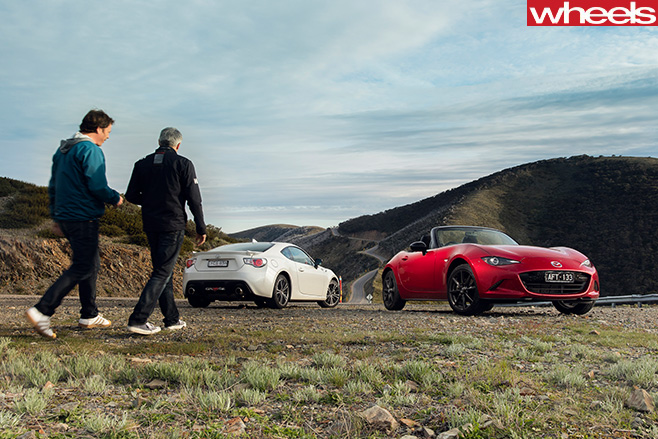
Mazda’s $31,990 starting price for the MX-5 1.5 – just $2000 more than the original in 1989 – indicates how much of a rival it deems the 86. There’s a $2500 premium for adding 500cc: the base-spec MX-5 2.0 costs $34,490.
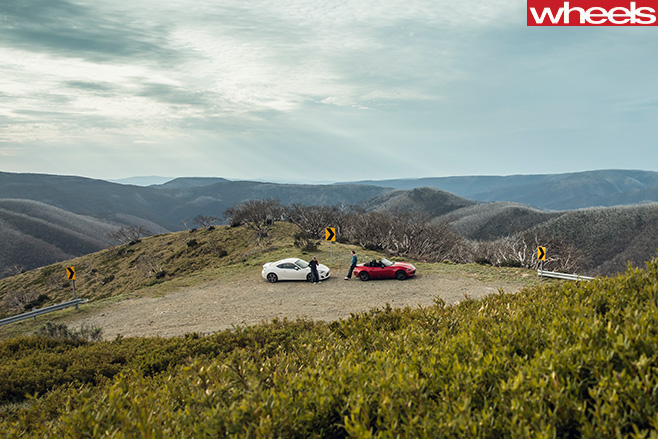
These are driver’s cars, so naturally we’re abiding by their standard six-speed manual gearboxes rather than the sacrilegious optional autos.
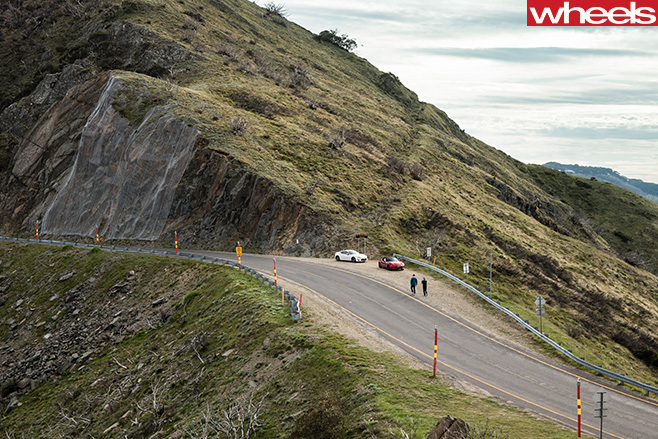
On the track
There’s still a notable power disparity between the Mazda’s 2.0-litre, whose four pistons punch downwards in a neat (north-south) line, and Toyota’s same-size unit, whose four pistons are opposed horizontally and jab sideways.
But while the MX-5 falls 29kW short of the 86’s 147kW, it counters with a kerb weight advantage of nearly 250kg – 1033kg v 1275kg.
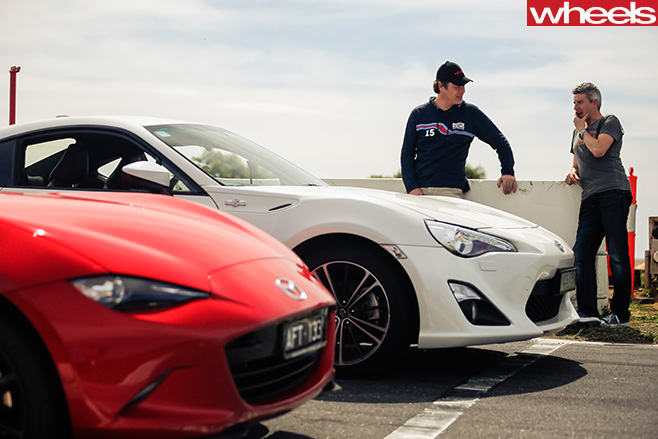
That should make it close at our designated track – the roller-coaster on bitumen that is Haunted Hills, in Victoria.
First up is the 86, which in 2012 transported us back to the ’80s – a decade when Toyota was known more for a range of exciting sports cars than for dynamic dullness.

Maximum torque of 205Nm doesn’t materialise until a surely-that’s-a-misprint 6400rpm, though some meaningful pulling effort enters the fray from 3000rpm.
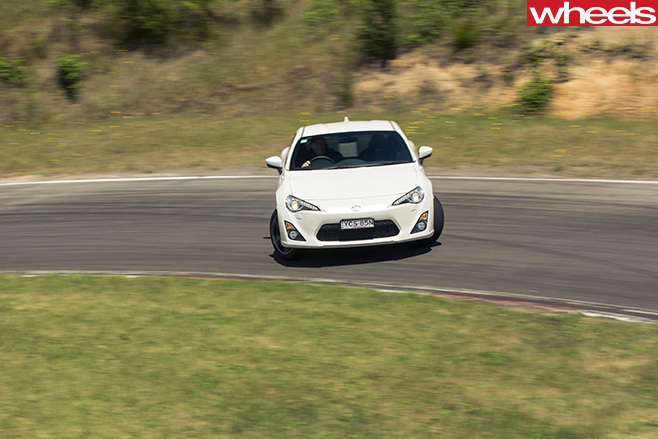
The Toyota’s acoustics are a more natural match to the track environment, where its quasi-belligerent vocals contrast with the civility of the Mazda’s.
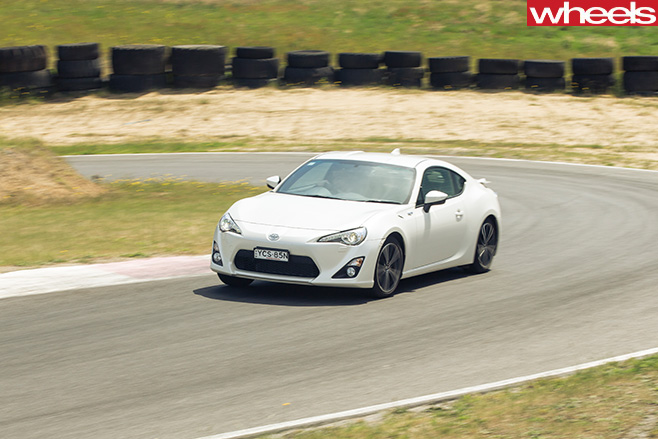
Yet the MX-5 is the early pick of the drivetrains here on the tight, descending and ascending, layout of Haunted Hills.

And the Mazda’s six-speed manual is a purler. Where the 86’s stick-shift operation has some notchiness that slightly spoils its otherwise positive nature, the MX-5’s action – via a gearlever almost as chubby as the original NA’s – is satisfyingly slick and ultra-accurate.
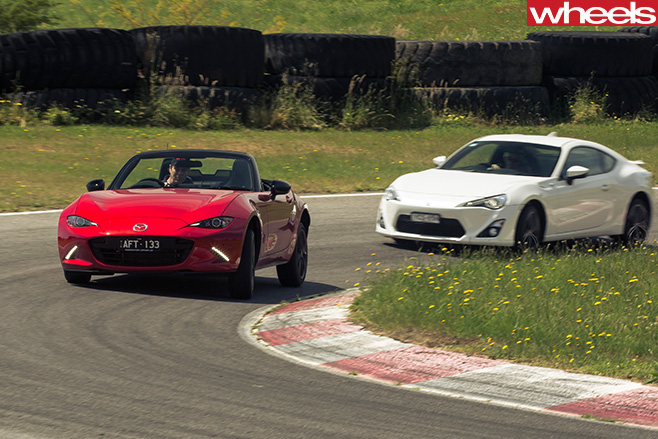
Electronics interfere with the 86’s progress, even if the VSC Sport button is pressed to employ the electronic nannies part-time.
Switched off, the 86 chassis is allowed to demonstrate its fine talents.

The 86 sits remarkably flat through bends and under hard braking, with a seemingly imperturbable balance stemming from that ultra-low centre of gravity.
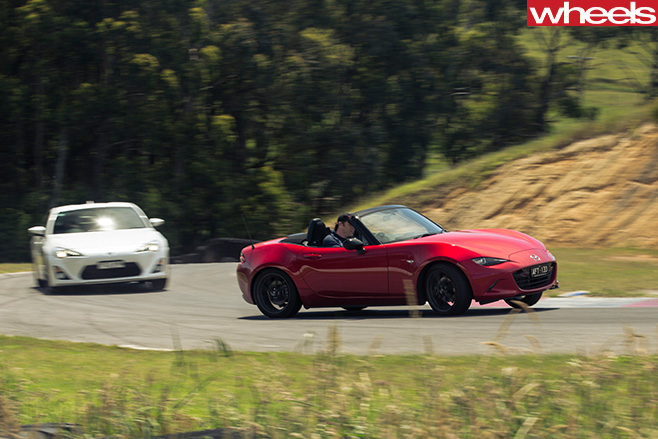
The MX-5 takes a little more acclimatisation to get up to speed on track, because body control isn’t quite as taut, the brake pedal isn’t quite as meaty, and the steering isn’t quite as talkative or precise.
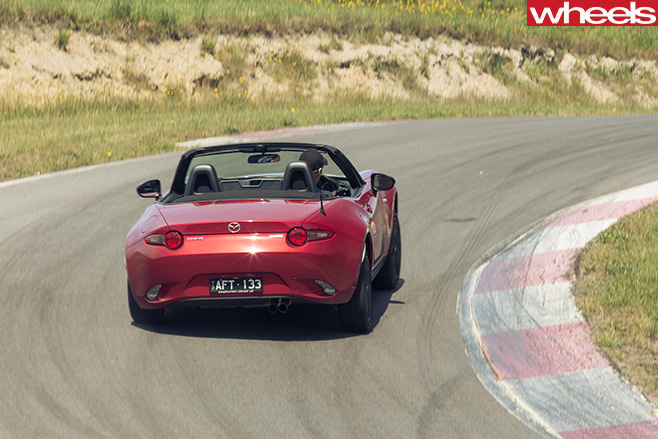
And while body roll is exaggerated, it would be erroneous to equate this with poor balance.
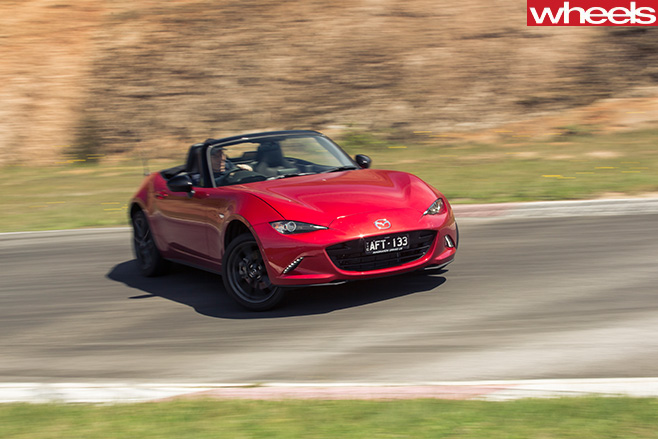
This is a rag-top that doesn’t get ragged on the limit – and one that will allow enjoyment with a safety net, courtesy of a vastly better calibrated stability control system.
It’s a close call between this playful duo of entry-level rear-drivers on the track – but the livelier MX-5 shades the 86 for involvement. And lap time – by four-tenths.
On the road
Unblemished racetrack surfaces have flattered many a car, but both of these Japanese sports cars transition terrifically to the bumpy bitumen of Aussie country roads.
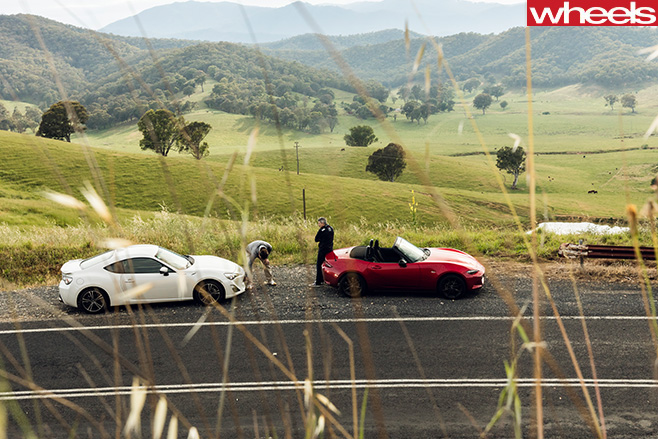
The damping of the MX-5 feels a tad busier, but not enough to prevent the Mazda from being as impressively supple and comfortable as the Toyota when traversing country.

Add in the Mazda’s better tractability and torquier mid-range, and both our testers found it harder – and thirstier – work chasing or escaping from the MX-5.
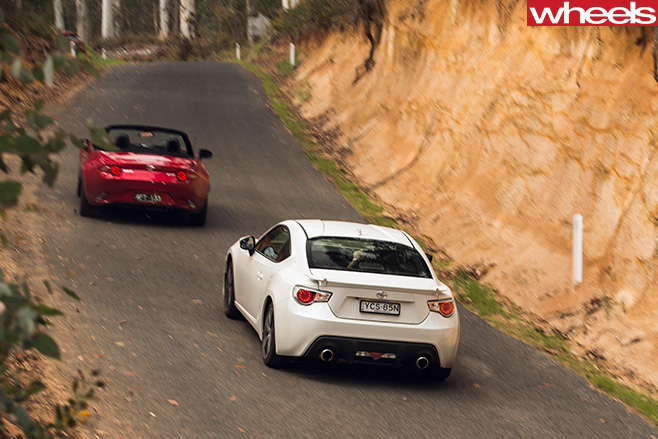
At servo time, after being driven as their engineers intended, the MX-5 used 7.8L/100km of premium unleaded versus the 86’s 9.5L/100km.
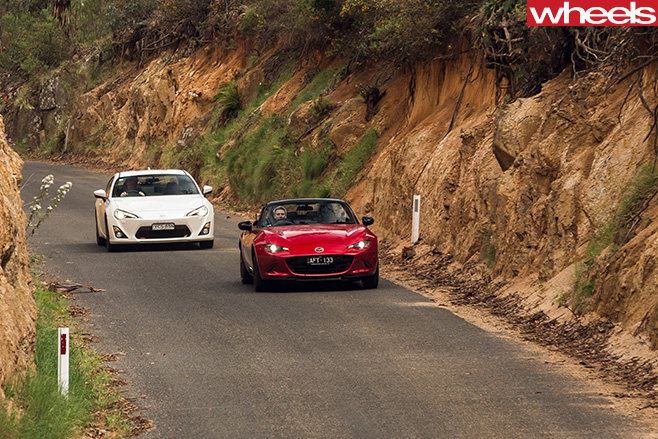
The Toyota already sits 30mm closer to the road than the 2.0L MX-5 (which rides 10mm higher than the 1.5L). And its front seats go lower – despite the Mazda having lowered its pews by 20mm over the previous model.
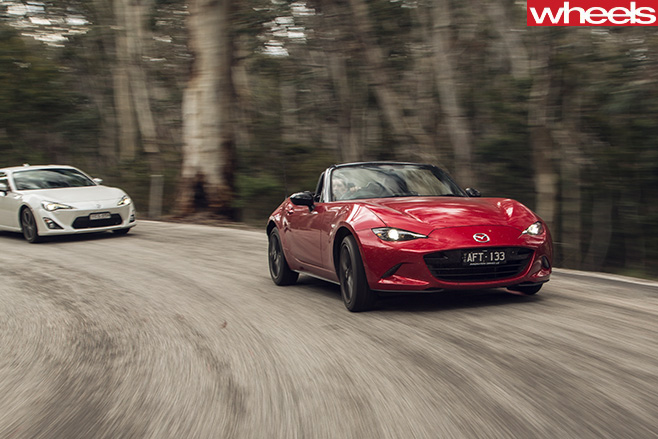
Still, the Mazda can offer a view the 86 can’t – when you manually unclip and stow the MX-5’s fabric folding roof.
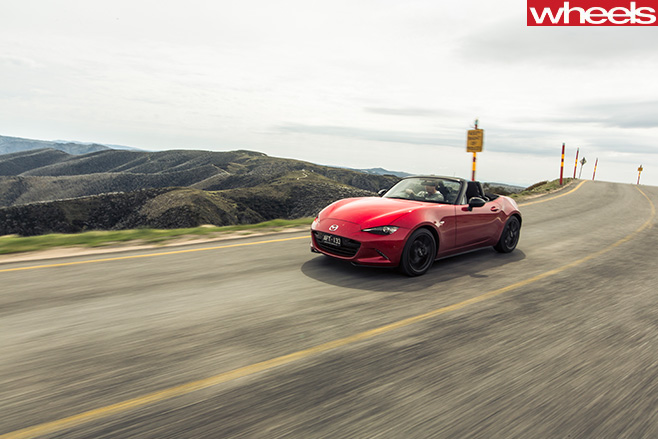
The dashboard scenery is also more attractive here, subjectively speaking. Where the Toyota’s cabin requires the euphemistic description of looking “business-like”, the Mazda has a higher-quality look and feel – particularly with the GT’s 7.0-inch multimedia display, which looks like it belongs at least in 2015, where the 86’s smaller effort could be from the year of its number.
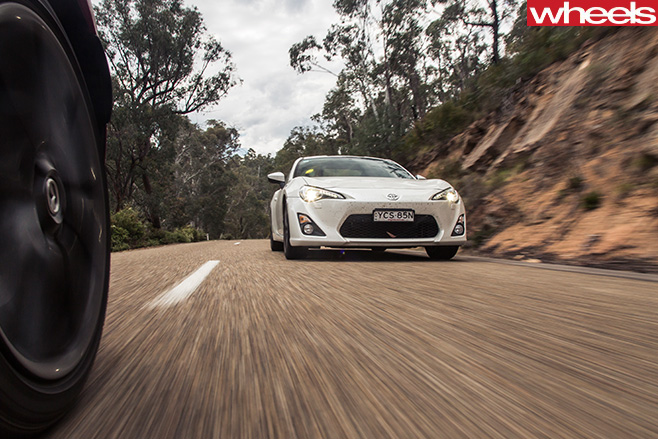
There are ergonomic flaws in the Mazda beyond the limited headroom and steering wheel adjustment, though. The rotary controller for the MZD Connect system is awkwardly placed, as are the moveable cupholders – whether they’re positioned in their default place behind and between the two seats, or in the slots either side of the centre console.

However, neither the roadster from Hiroshima nor the coupe from Ota (courtesy of Subaru) emerges from this battle looking black and blue.
Off the fence
We’re simply fortunate to have the Mazda MX-5 and Toyota 86 – the new poster boys for affordable Japanese sports cars that partly compensate for absent Japanese nameplates such as the Integra and Silvia.
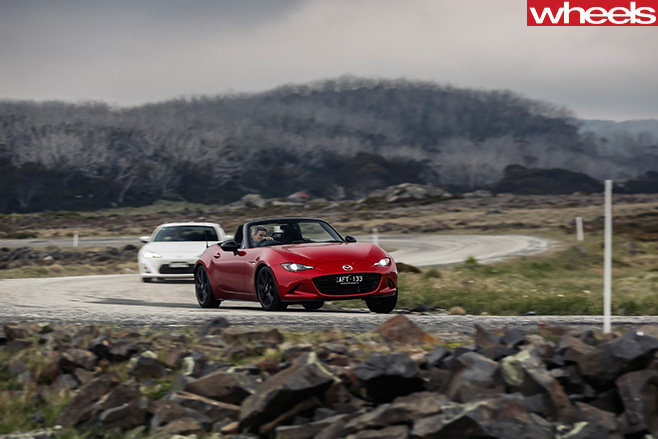
Think logically rather than instinctively, and the 86, of course, is more practical with its 2+2 seating and foldable back seat. Yet the MX-5’s ability to go either covered up or topless brings the Mazda its own brand of versatility.
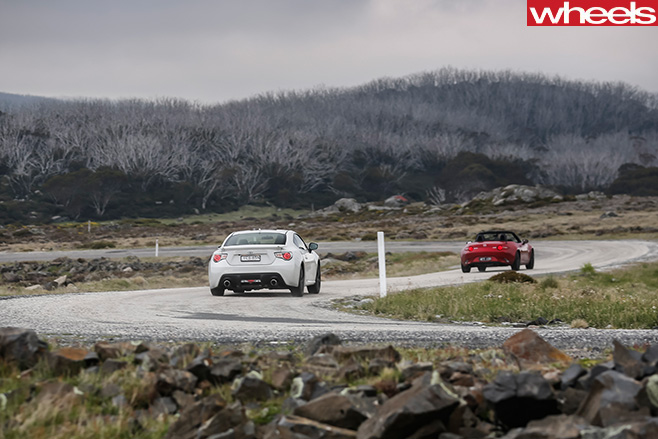
Add in the MX-5’s more flexible engine, which makes everyday driving as pleasurable as fast driving is enjoyable, and it’s “kampai” to a lightweight car that is almost quite literally a tonne of fun.
What happened to the 86 convertible?
Toyota teased us with a drop-top version of the 86 at the 2013 Geneva motor show, and at the Tokyo show a few months later – only for the idea to fold in on itself. Despite Toyota’s US youth brand Scion, which markets the 86 as the FS-R, pushing for the convertible variant, the car’s co-developer Subaru reportedly had manufacturing and safety concerns. A Scion executive also indicated Japan wasn’t expecting the model to be profitable if it went into production but wasn’t prepared to cop the estimated loss.
Which MX-5 will Australians buy?
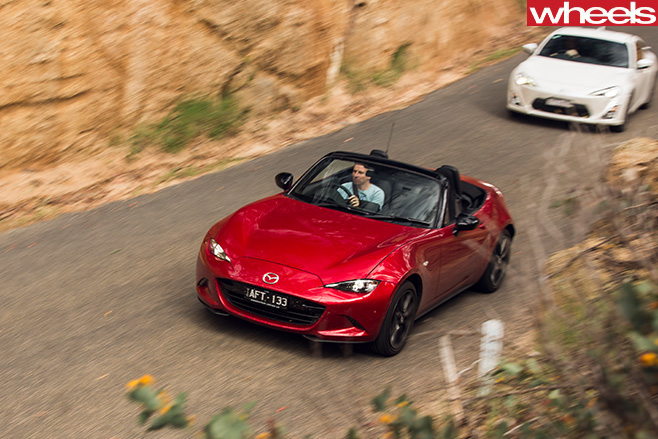
SPECS
TOYOTA 86 GTS Engine: 1998cc flat 4, dohc, 16v Max power: 147kW @ 7000rpm Max torque: 205Nm @ 6400-6600rpm Transmission: 6-speed manual Weight: 1275kg 0-100km/h: 7.6sec (claimed) Fuel economy: 9.5L/100km (test average) Price: $35,990 On sale: Now
MAZDA MX-5 2.0 ROADSTER Engine: 1998cc 4cyl, dohc, 16v Max power: 118kW @ 6000rpm Max torque: 200Nm @ 4600rpm Transmission: 6-speed manual Weight: 1033kg 0-100km/h: 7.3sec (claimed) Fuel economy: 7.8L/100km (test average) Price: $34,490 On sale: Now


